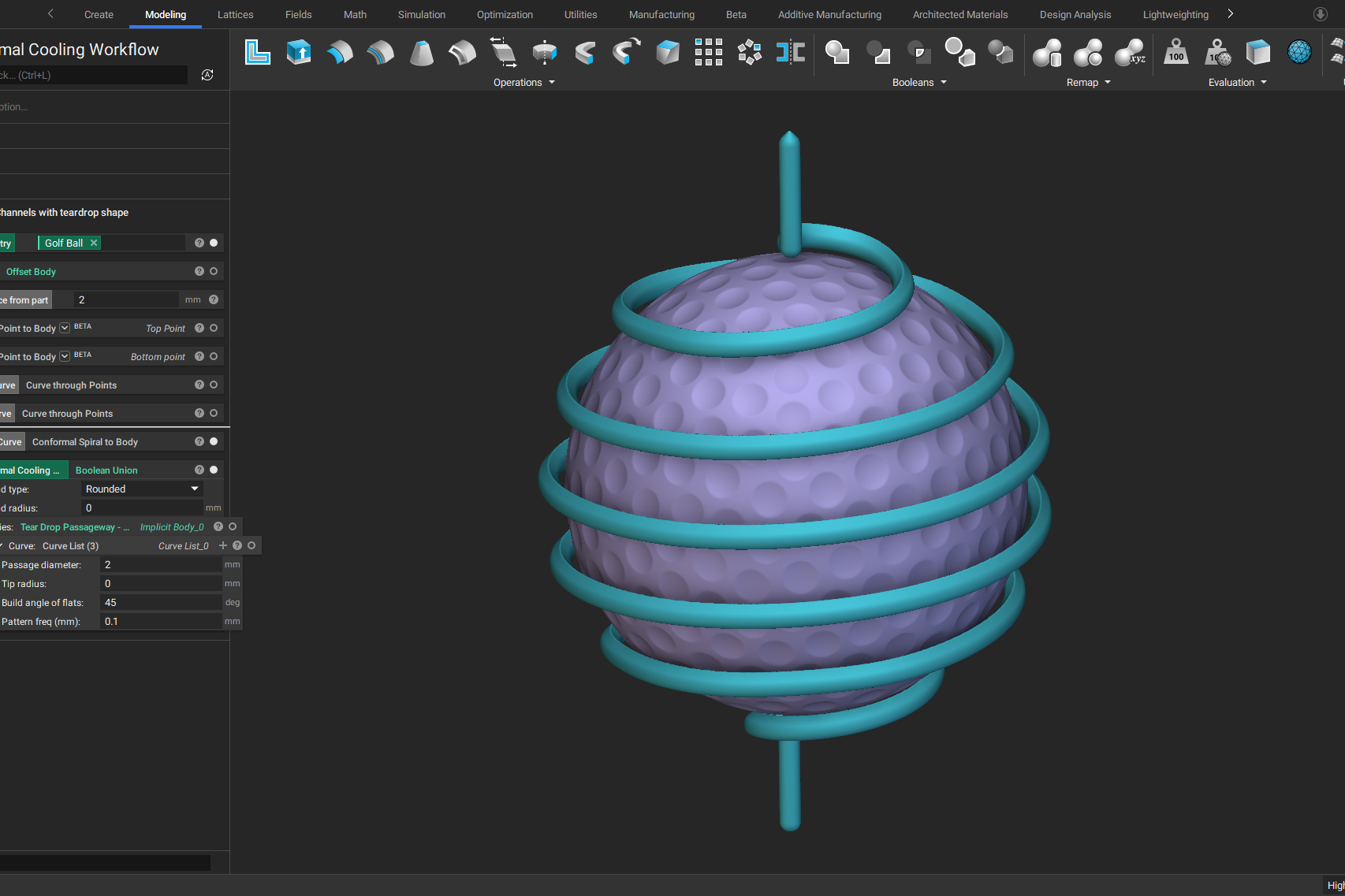Additive insights in industrial design: Interview with Sarat Babu
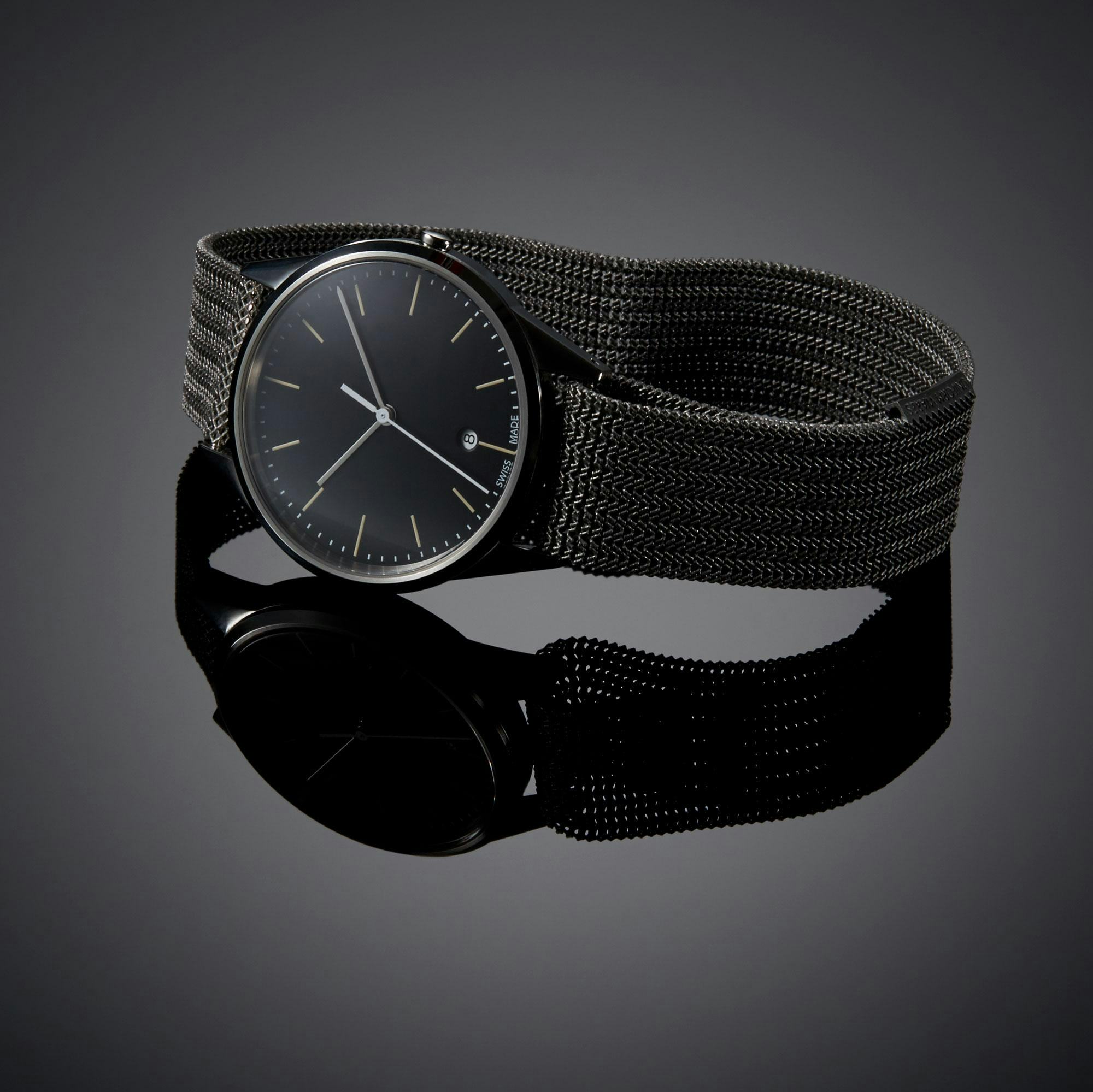
Written by nTop
Published on October 2, 2020
Find out what industry vet, Sarat Babu from Alloyed (formerly Betatype), thinks AM is good for...and what it isn't.
Tell me a bit about your background and how you happened upon this career field.
Oh wow, we’re really going back. I’ve been active in the additive space since 2008. My background is in Materials Engineering at Imperial College London. I subsequently completed an Industrial Design degree at the Royal College of Art and a doctorate in Computational Geometry at UCL.
I set up Betatype in 2012. We built our own software for additive processes to improve design and system control. We bought our first metal additive manufacturing machine and grew to ten people, and then late last year we merged with Oxmet Technologies to form a new company called Alloyed. Together we offer a compelling end-to-end technology stack, including the Alloys By Design (ABD) platform and there is now about 50 of us.
Alloyed now operates 8 metal AM systems across three sites in the UK and has a regional office in Japan. My role is Chief Digital Officer. As part of that I look after our Digital Component Design and Manufacturing arm of the business.
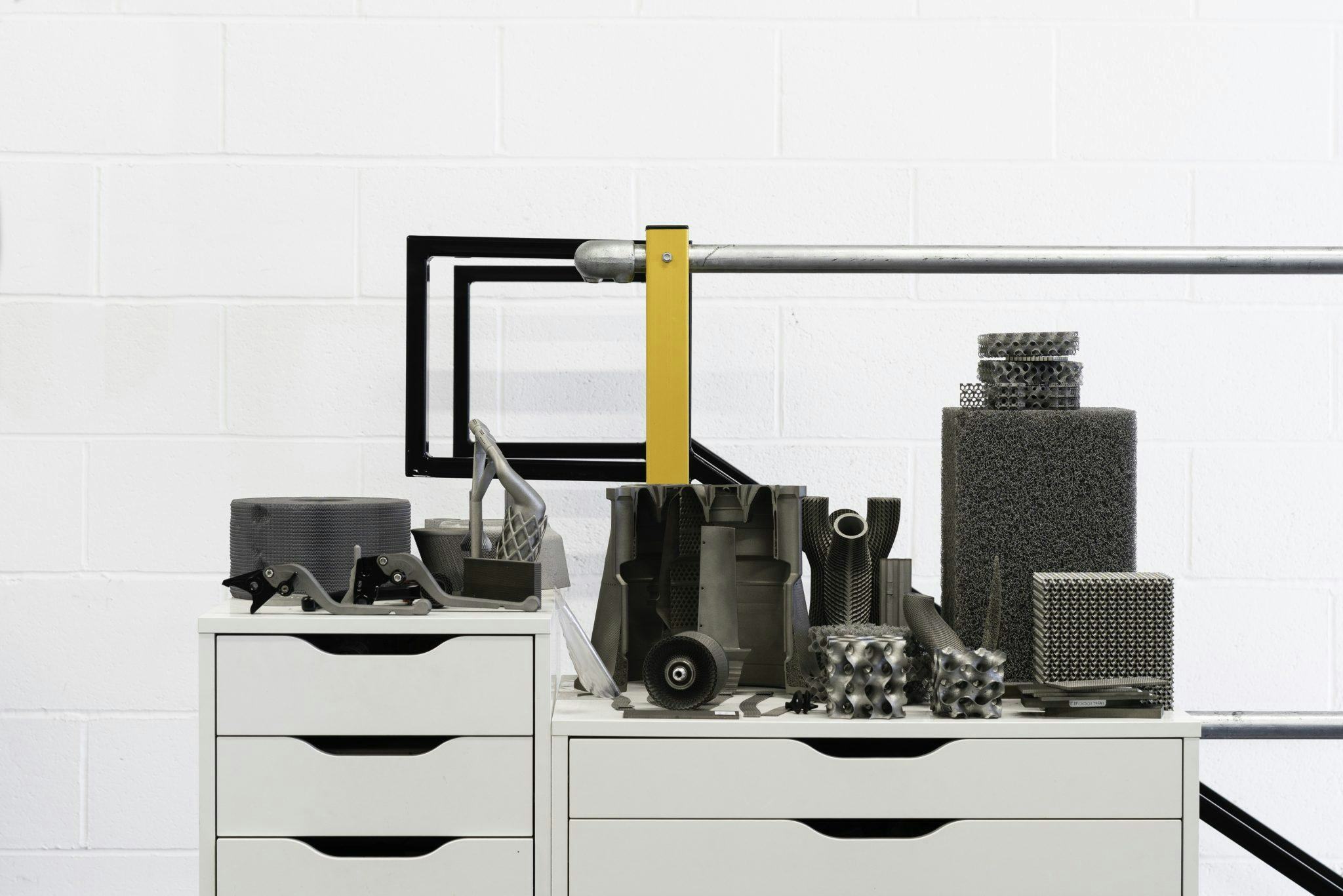
Alloyed London Office. Image courtesy of Alloyed.
What made you interested in industrial design?
I started out in materials as a Materials Engineer. I began working in the industry on automotive components. I worked on Ford car parts in the UK and found it tedious because the truth is as a materials person the work is one dimensional in terms of product design or development. What I mean by that is that most people think of materials in a 1D way such that it needs to have a single quality to it — for example it needs a specific surface finish or thermal property. You can put a single, qualitative number around any of those parameters.
In a design or development process you start with a material which sometimes ends up being a limitation of the project, or, you design everything then you pick the material at the end. The important point here is that the material is not something you work with throughout the design process generally.
To create an object you don’t really deal with material at the fidelity or dimensional level as you do with the form of the object. I found this disappointing because I wanted to treat materials more fluidly within the actual design process and that is why I jumped on to do a degree in Industrial Design.
Since 2008 - 2020 you must have seen a huge amount of advancement in materials, software technology, and printing technology.
Yes and no. What I mean by that is there have been huge technological advancements, but I don’t think that matters because this technology isn’t making as much of a real world impact as we’d like to think.
Technology is great but if you do not have the right people behind it who can creatively use it and manipulate it and design with it then it’s very difficult to see the full potential of it. One of the biggest challenges we have in additive is, “what is it good for?”
If you think about that brazenly, right now, we can obviously point to the fact that there are more and more examples of AM being good for some things but in each case they are relatively niche working within the context of what the technology offers and also how well the intended customer or user can actually leverage the opportunity that’s put in front of them. Part of the challenge with additive and part of the challenge with this whole new phase of design and engineering, from a complexity standpoint, is that when you’re given the opportunity to design anything and have an infinite amount of geometric freedom — a lot of people don’t know where to begin.
To create a solution, you need to have a problem that is just as well defined. So, you need to have that high level of complexity in your understanding. Over the years we have had great technology advancements. Fundamentally, one of the things that needs to catch up is an understanding of what those design and engineering methods look like.
So it’s interesting, at Alloyed, we have a really good grasp of this and we have some customers that really don’t. And fundamentally for them they still want to think about things very one dimensionally and the complexity side of the solution is up to us to define. What I mean by that is they have a part, it is a good part, and they want AM to make it a better part. They may not actually be that enthused to take on all that complexity, so we do that. We must really understand their problem better than they do in order to develop a solution that is better than their current solution.
It takes a huge amount of work to build that knowledge and build that relationship with the customer. It is kind of the antithesis to much of the hype about additive, which suggests that you can design something, get the file ready, press play on the machine and the part pops out. This happens in your office and supply chains don’t exist anymore. But that’s not the reality.
The reality is much more considered. When you design something, you manipulate a long list of 1,000’s of different parameters and every single one of them has an implicit effect which has to be considered. We are really in the early days of this. I was speaking to a good friend and he was saying that this is like the early days of CNC where you stick your ear against the machine and you’d turn the knob that controls the RPM on the cutter based on the sound. That’s how little the industry really understands right now about all these parameters and what they mean for design.
Have you noticed any sort of common themes in companies that tend to make the jump to additive more easily than others?
Yes, definitely. I think it is about a focus on physical components. The companies that are really engaged in additive are all about the strategic value and what it could mean for their industries. It is more than the value of the part; it is about an intellectual land grab and building their own vertical. And for those companies it is critical for them to own their production or own some part of their production in order to differentiate themselves from their competitors to provide a competitive advantage.
Additive makes a lot of sense in aerospace and medical. Because to build a comparative component in aerospace, for example, using traditional processes it might be a 10 to 20 stage process whereas with additive it can be a fraction. So for them it’s a totally different viewpoint than a different customer who doesn’t care about how something is made. All they care about is, here’s the part they designed, and they’d like that part as close to that as possible and at a specific price. If it’s stamped or it’s machined or die cast or forged or AM’ed, it doesn't matter — and that’s the vast majority of parts. From this perspective, comparatively, when you look at global supply chains, why would a business take on these new technologies unless they could gain a massive amount of value. It comes back to the whole point of applications and for all the technical advancements that have happened on the systems side, until we get to the point where people are able to generate more value from the application side, the technology has a really difficult balancing act to make it commercially viable for everyone apart from the most strategic players.
What’s been one of your favorite projects and why?
Obviously, there are loads of projects that we can never talk about but the best project we’ve done in the public domain is the collaboration we did with Uniform Wares developing the titanium watch strap.
For me it hits every kind of angle of building everything from the ground. This includes the value of that item, how it is designed, the way it is optimized, and the built parts. That was a project that went on for several years and we built literally hundreds of different prototypes in order to get to a point where we were building a component that was right for people to wear. And it was a part that we developed that went into production.
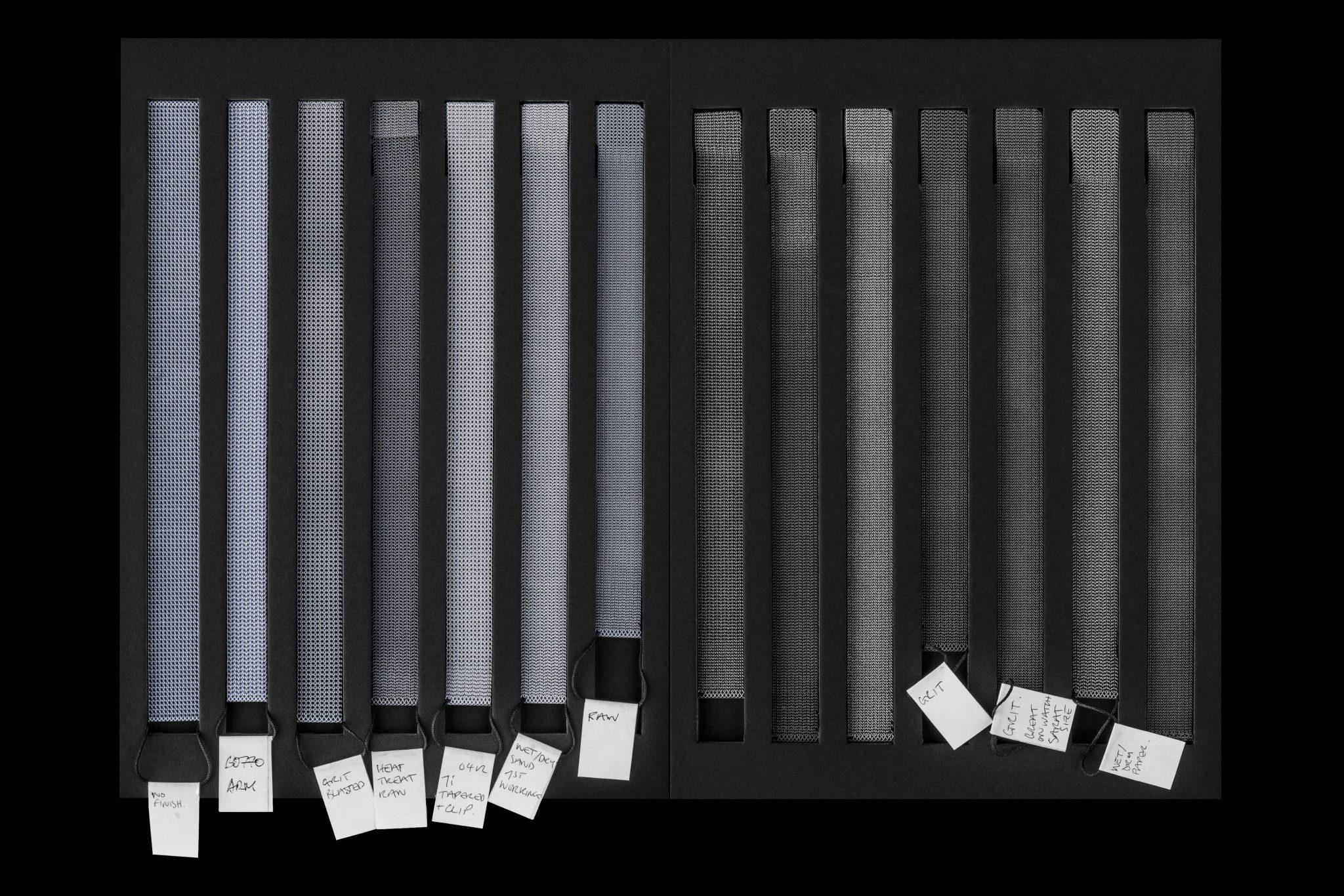
Titanium watch straps. Image courtesy of Alloyed.
One of the great moments I had around this project happened when I was in Nordstrom’s in Seattle. I was in the Men’s section and I went over to the watches and there it was. The printed watch strap that we had built. The nice thing about it was there was no reference to AM, it was just sitting there with all the other products.
It was not about the novelty of additive but about the value in everything that we had managed to do from the design side and the fact that we had reduced Uniform Ware’s supply chain burden of ordering custom straps from a manufacturer. One of their European suppliers could take up to 6 months to get 50 parts; we took that down to 2 weeks.
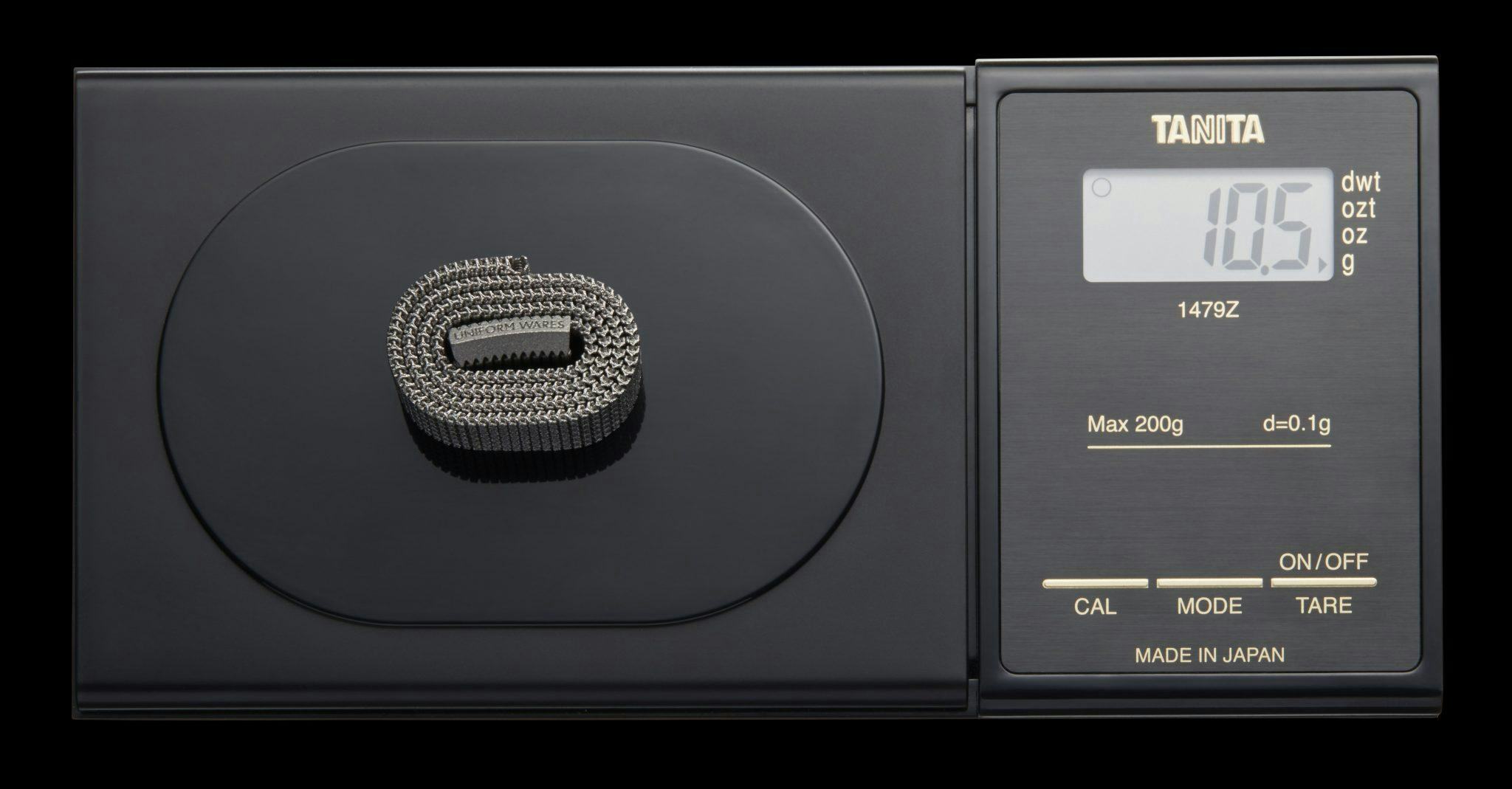
Titanium watch strap. Additive manufactured weighing in at 10.5 grams. Image courtesy of Alloyed.
All the things we achieved in the design and development process manifested in a part which was really intriguing. That kind of completeness of a project is powerful because we weren’t just designing a cool thing but really taking it from concept to something that actually made it out there.
What advice would you give a college student who is graduating and entering this industry now?
Take nothing for granted. It’s easy to get presented with a series of solutions in terms of software and machines and that you can design a part and build it with a machine. What we really need is a generation of designers and engineers who are going to interrogate these tools and processes so that they don’t miss the fundamental potential of the technology.
What we found when we were starting to work with these systems is that a lot of the capabilities that they presented were not a function of their hardware but a function of the way their software had been designed.
It was only because we managed to get access to systems and speak to machine vendors and really kind of push the process and push the envelope on what those systems could do that we were able to build the parts that we did.
I think it’s essential if you’re a graduate now with access to a lab with a couple of machines it’s not enough to go and just use those machines. I would break them down. Figure out how they work and really try to rethink it. Instead of putting the process at the center of that world the application needs to sit there instead. Additive is just a process. It’s the parts that have the value.
If you want to keep AM as the thing you’re going to concentrate on I would advise against it and I would advise that AM is part of that story and you should use it as a process to allow you to explore what you can design further but you shouldn’t be married to it or allow it to define what you do. You should understand it. You should engage with it that way rather than take it for granted or ignore it. Critical thinking is really important for new grads.
Fundamentally there’s value here, in the things we can do. So much so there is an opportunity to redefine everything about how we design, engineer and manufacture parts, but technology is just part of the battle our ways of thinking need to match.
I'd like to thank Sarat for taking the time to interview with me. I don't think I've learned more in less than an hour than I did on this interview. This is the third interview we've done with an industry expert. In case you missed the other two, check out what Andreas Vlahinos and John Barnes are saying.

nTop
nTop (formerly nTopology) was founded in 2015 with the belief that engineers’ ability to innovate shouldn’t be limited by their design software. Built on proprietary technologies that upend the constraints of traditional CAD software while integrating seamlessly into existing processes, nTop allows designers in every industry to create complex geometries, optimize instantaneously, and automate workflows to develop breakthrough 3D-printed parts in record time.
Related content
- VIDEO
Topology Optimization Design for Cast and Injection-Molded Parts
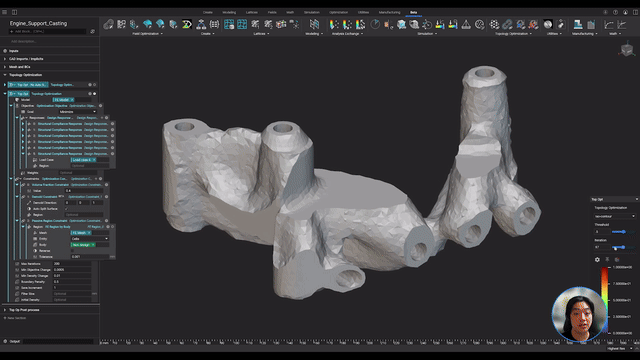
- VIDEO
Lightweighting an impeller for additive manufacturing
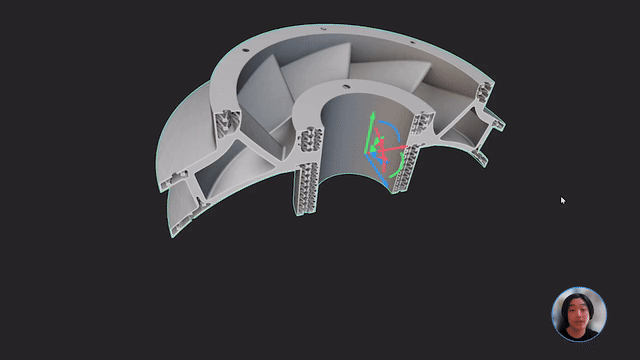
- GUIDE
Download: Advanced design software and additive manufacturing for personalized implants
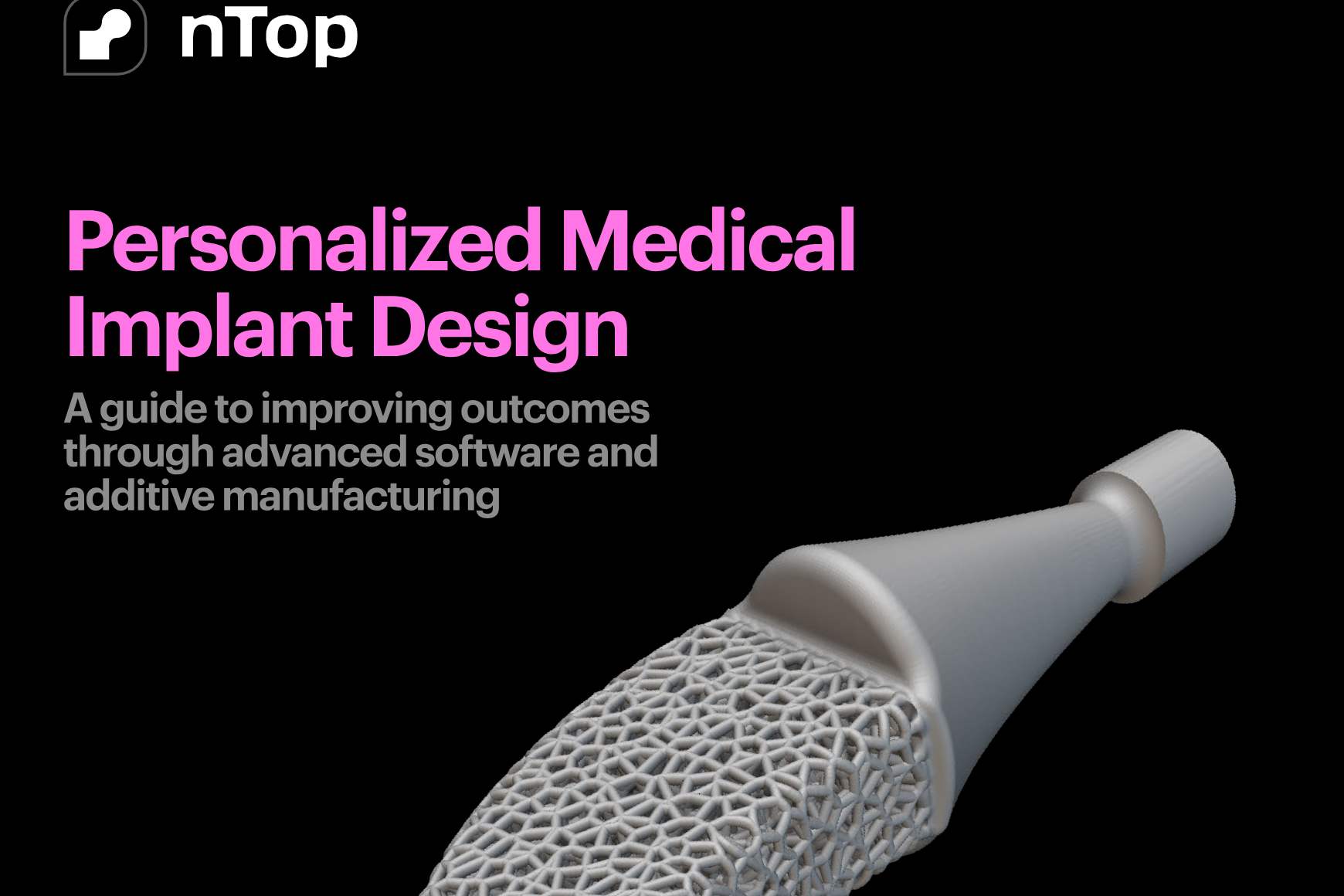
- VIDEO
Sneak peek into the nTop + Autodesk Fusion 360 integration
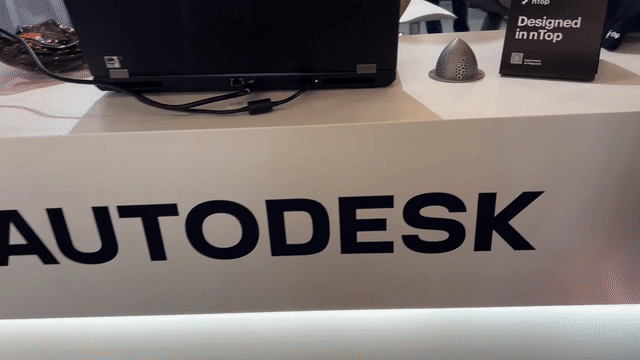
- ARTICLE
Optimizing thermal management with conformal cooling to extend operational life
